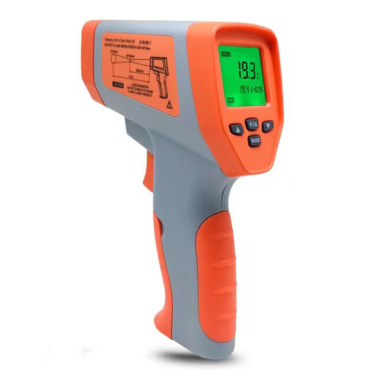How to Use an Oven Thermometer for Accurate Baking

# How to Use an Oven Thermometer for Accurate Baking
## Why an Oven Thermometer is Essential for Baking
Many home bakers assume their oven’s built-in thermostat is accurate, but this is often not the case. Studies show that up to 90% of home ovens have temperature discrepancies, sometimes by as much as 50°F (10°C) or more. This can lead to undercooked or overcooked dishes, uneven baking, and disappointing results.
An oven thermometer is a simple, inexpensive tool that can dramatically improve your baking outcomes by giving you an accurate reading of your oven’s actual temperature.
## Choosing the Right Oven Thermometer
When selecting an oven thermometer, consider these factors:
– Analog vs. digital: Analog models are more affordable but may be less precise
– Temperature range: Ensure it covers the temperatures you typically bake at
– Durability: Look for models with sturdy construction
– Readability: Choose one with clear markings that’s easy to read through the oven door
## Proper Placement of Your Oven Thermometer
Where you place your thermometer significantly affects its accuracy:
– Place it in the center of the middle rack for the most accurate reading
– Avoid touching oven walls or racks
– Keep it away from heating elements
– For convection ovens, position it slightly off-center
## How to Calibrate Your Oven Using a Thermometer
Follow these steps to ensure your oven is properly calibrated:
– Preheat your oven to 350°F (175°C)
– Once preheated, wait 15 minutes for temperature to stabilize
– Check the thermometer reading
– If there’s a discrepancy, adjust your oven’s temperature setting accordingly
Keyword: oven thermometer
– Repeat the process at different temperatures (e.g., 300°F and 400°F) to check consistency
## Maintaining Your Oven Thermometer
To ensure ongoing accuracy:
– Clean it regularly with a soft cloth (avoid harsh chemicals)
– Check for signs of wear or damage
– Recalibrate periodically by testing in boiling water (should read 212°F/100°C at sea level)
– Replace if it becomes significantly inaccurate
## Common Baking Problems Solved by Proper Temperature
Using an oven thermometer can help prevent these common issues:
– Uneven browning: Caused by hot spots in the oven
– Dense or sunken cakes: Often due to incorrect baking temperatures
– Overcooked edges with raw centers: Typically from oven running too hot
– Cracked cheesecakes: Frequently caused by temperature fluctuations
## Advanced Tips for Professional Results
For those looking to take their baking to the next level:
– Monitor temperature throughout baking, not just at the start
– Keep a baking log noting temperature variations and results
– Consider using multiple thermometers to check for hot spots
– For delicate items like macarons, verify temperature stability
By incorporating an oven thermometer into your baking routine, you’ll gain better control over your results and develop a deeper understanding of your oven’s behavior. This small investment can make a significant difference in the quality and consistency of your baked goods.